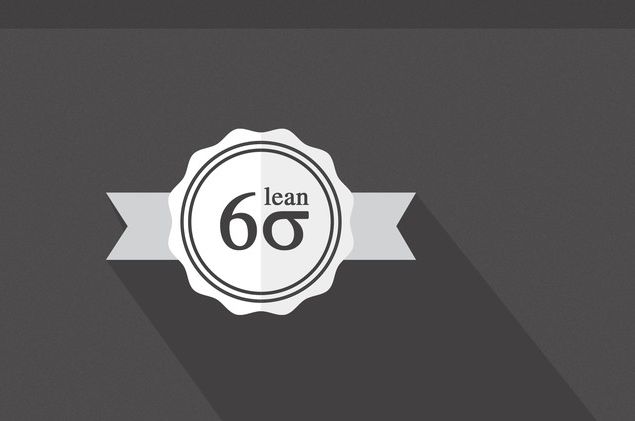They are competent in the use of Six Sigma tools and techniques and standard principles of Lean. A Lean Six Sigma Black Belt has a thorough grounding in all aspects within the phases of D-M-A-I-C (Define, Measure, Analyze, Measure, Control), and can identify non-value-added elements and activities. Six Sigma certified professionals work on continual quality improvement by analyzing and solving quality problems, and creating a high performance organization. The Six Sigma Black Belt is the fifth level of certification, after the Green Belt.
Certified Black Belts should be able to assume team leadership with confidence, and allocate responsibilities and team member roles. This course will give you a thorough and detailed understanding of Six Sigma and its focus on eliminating defects through process improvement and variation reduction. The intensive course is designed to help you navigate the Lean Six Sigma Black Belt Certification Exam syllabus, and aim for a first time pass of the Black Belt exam.
Define Phase
The Basics of Six Sigma
- Meanings of Six Sigma
- General History of Six Sigma & Continuous Improvement
- Deliverables of a Lean Six Sigma Project
- The Problem Solving Strategy Y = f(x) 1.1.5 Voice of the Customer, Business and Employee
- Six Sigma Roles & Responsibilities
The Fundamentals of Six Sigma
- Critical to Quality Characteristics (CTQs)
- Cost of Poor Quality (COPQ)
- Pareto Analysis (80:20 rule)
- Basic Six Sigma Metrics: including DPU, DPMO, FTY, RTY Cycle Time, deriving these metrics
Selecting Lean Six Sigma Projects
- Building a Business Case & Project Charter
- Developing Project Metrics
- Financial Evaluation & Benefits Capture
The Lean Enterprise
- Understanding Lean
- The History of Lean
- Lean & Six Sigma
- The Seven Elements of Waste: a. Overproduction, Correction, Inventory, Motion, Overprocessing, Conveyance, Waiting Straighten, Shine, Standardize, Self-Discipline, Sort
Measure Phase
Process Definition
- Cause & Effect / Fishbone Diagrams
- Process Mapping, SIPOC, Value Stream Map
- X-Y Diagram
- Failure Modes & Effects Analysis (FMEA)
Six Sigma Statistics
- Basic Statistics
- Descriptive Statistics
- Normal Distributions & Normality
- Graphical Analysis
Measurement System Analysis
- Precision & Accuracy
- Bias, Linearity & Stability
- Gage Repeatability & Reproducibility
- Variable & Attribute MSA
Process Capability
- Capability Analysis
- Concept of Stability
- Attribute & Discrete Capability
- Monitoring Techniques
Analyze Phase
Patterns of Variation
- Multi-Vari Analysis
- Classes of Distributions
Inferential Statistics
- Understanding Inference
- Sampling Techniques & Uses
- Central Limit Theorem
Hypothesis Testing
- General Concepts & Goals of Hypothesis Testing
- Significance; Practical vs. Statistical
- Risk; Alpha & Beta
- Types of Hypothesis Test
Hypothesis Testing with Normal Data
- sample t-tests
- sample variance
- One Way ANOVA: a. Including Tests of Equal Variance, Normality Testing and Sample Size calculation, performing tests and interpreting results.
Hypothesis Testing with Non-Normal Data
- Mann-Whitney
- Kruskal-Wallis
- Moods Median
- Friedman
- Sample Sign
- Sample Wilcoxon
- One and Two Sample Proportion
- Chi-Squared (Contingency Tables): a. Including Tests of Equal Variance, Normality Testing and Sample Size calculation, performing tests and interpreting results.
Improve Phase
Simple Linear Regression
- Correlation
- Regression Equations
- Residuals Analysis
Multiple Regression Analysis
- Non- Linear Regression
- Multiple Linear Regression
- Confidence & Prediction Intervals
- Residuals Analysis
- Data Transformation, Box Cox
Designed Experiments
- Experiment Objectives
- Experimental Methods
- Experiment Design Considerations
Full Factorial Experiments
- Full Factorial Designs
- Linear & Quadratic Mathematical Models
- Balanced & Orthogonal Designs
- Fit, Diagnose Model and Center Points
Fractional Factorial Experiments
- Designs
- Confounding Effects
- Experimental Resolution
Control Phase
Lean Controls
- Control Methods for 5S
- Kanban
- Poka-Yoke (Mistake Proofing)
Statistical Process Control (SPC)
- Data Collection for SPC
- I-MR Chart
- Xbar-R Chart
- U Chart
- P Chart
- NP Chart
- X-S chart
- CumSum Chart
- EWMA Chart
- Control Chart Anatomy
- Subgroups, Impact of Variation, Frequency of Sampling
- Center Line & Control Limit Calculations
Six Sigma Control Plans
- Cost Benefit Analysis
- Elements of the Control Plan
- Elements of the Response Plan









Reviews
There are no reviews yet.